Why feather score
Regularly monitoring your flock allows you to identify injurious pecking early on and allows you to implement strategies before it becomes more serious. Frequent inspections, observing the birds behaviour and feather scoring will all help assess how the flock is performing. Additionally varied routine inspections expose the birds to non-threatening changes, reducing fear and stress.
Formal recording of feather scoring will enable you to monitor flocks over multiple cycles and objectively assess the success of implemented management strategies. There are different methods of feather scoring. The method below was developed by the University of Bristol, Soil Association and RSPCA and is used at annual scheme inspections to provide feedback and benchmarking for producers, to promote continuous improvement where necessary. Organic and free range laying hen producers are adopting this as a routine management tool. For more information see assurewel.org/layinghens.html
How do you feather score?
Assess and score 50 birds across the house and range. Visually assess and score the head/neck area and back/vent area of the bird separately.
Score 0
No/minimal feather loss
|
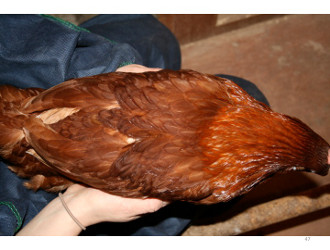 |
|
No bare skin visible, no or light wear, only single feathers missing
|
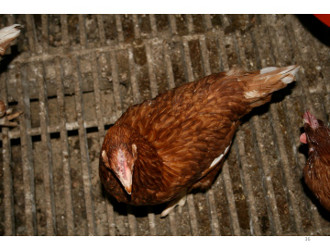
|
Score 1
Slight feather loss
|
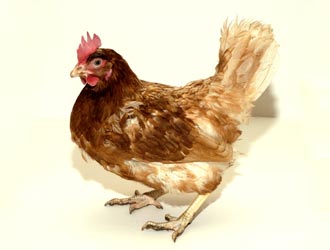 |
|
Moderate wear, damaged feathers or 2 or more adjacent feathers missing up to bare skin visible < 5cm (2 inches) maximum dimension
|
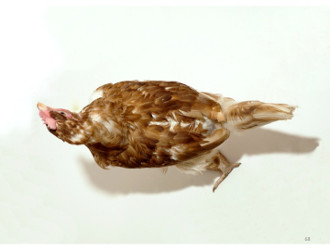 |
Score 2
Moderate/severe feather loss
|
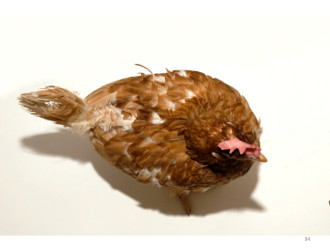 |
|
Bare skin visible more than or equal to 5cm (2 inches) maximum dimension
|
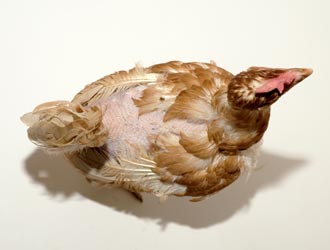 |
How many birds do you assess?
We recommend you score at least 50 birds every week or fortnight. However assessing a larger number of birds will increase the reliability of the sample and be more representative of the whole flock.
Which birds do you assess?
It is important to randomise the birds you score to prevent any bias. Birds should be sampled to provide a reasonable representation of the proportion of birds in different locations at the time of the assessment, e.g. birds from the litter area, slatted area, raised perches, tiers and range. Ensure the birds chosen are a random sample in that location, e.g. sample every 5th bird, and avoid being drawn to certain birds. The scoring can be done without picking the birds up, but you need to be close enough to clearly see the feathers.
Is training available?
Support and training for producer groups, field staff, vets and companies is available through the AssureWel project. To find out more visit assurewel.org/layinghens.html or contact animalwelfareadvisor@assurewel.org for details.